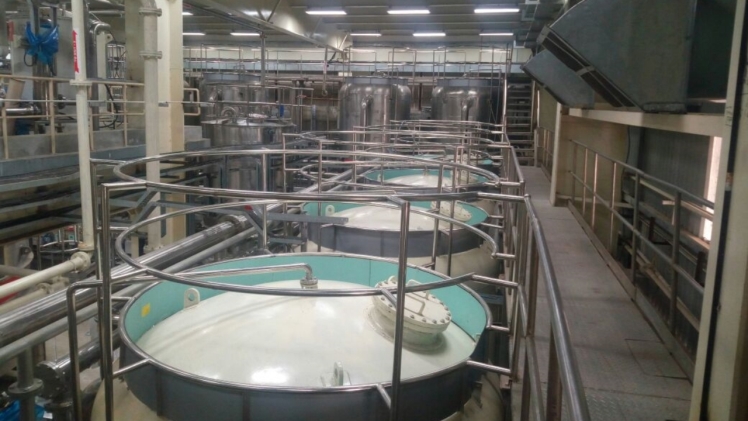RO is a water purification system that operates on the mechanism of reverse osmosis. It involves a semi-permeable system, which is used to separate the unwanted which is present as an impurity in water. Reverse osmosis involves a purification method based on the mechanism of osmosis. An applied potential difference is used to stop the osmotic pressure. The purification process involves overcoming osmotic pressure, which is a colligative property of a solvent.
Mechanism
Osmosis is a process in which water molecules get transferred from a solution having a low concentration of solute molecules to one having a low concentration of solute molecules. The solution which has a comparatively lower concentration of water molecules is called a hypertonic solution while the solution having a higher concentration of water molecules is called a hypotonic solution. Osmotic pressure is defined as the minimum external pressure which needs to be applied to stop the flow of water molecules from a hypotonic solution to a hypertonic solution. When the exact amount of pressure is applied, the system becomes stable despite the difference in concentration between the two solutions. When the prescribed amount of pressure is increased, the flow of water molecules starts in opposite direction. In such a scenario the flow of water molecules happens from hypertonic solution to hypotonic solution.
In the process of reverse osmosis in the RO water purifier, the impure water acts as a hypertonic solution and pure (potable water) is the hypotonic solution.
In the process of reverse osmosis in an RO, the impure water acts as a hypertonic solution and pure (potable water) is the hypotonic solution. In this setup, the water molecules flow from impure water to potable or pure water, i.e., from hypertonic solution to hypotonic solution.
Market
For 50 years, the Prefiltration of high fouling water with other membranes with pores that are larger, which requires less hydraulic energy. The passage of water through membranes means that they are often pressurized.
There have been developments in recent years which has the process of integration. In recent years, low-pressure high recovery and high-pressure recovery multistage. RO produces a high recovery system that facilitates efficient water purification. In recent years it has developed enormously over the best few years. The TDS ranges for potable water and impure water are very different which needs to be taken into consideration.
A reverse osmosis plant or an RO plant involves a mechanism of purification of water. Plants are situated in India in various cities which carry out purification processes. These plants generally employ the reverse osmosis process on a wider scale to purify water.
Reverse osmosis systems work on the Crossrow Filtration method. The flow of the product is dependent upon temperature and pressure.
Another important factor is Pretreatment, the water which is fed to the source. It involves the purification of impurities of removal of microorganisms and bacterial organisms. The salts which are soluble in very few amounts are precipitated by several methods and modern technologies.
RO plants offer a lot of employment opportunities for different sections of people. The government has planned to set up seventy-nine new plants in villages. This initiative will be a huge boost in enhancing employment opportunities. MCC has planned to set up more than 20 plants across urban and rural areas.
RO plants provide a lot of employment opportunities for technical individuals including engineers. It involves a high extent of mechanisms that involve complex mechanisms and technical procedures.
This modern field requires a high level of requirement which demands high customer service. The supply chain industry has stiff competition which requires companies to cope with increasing requirements. It involves various mechanisms which need the plants to employ advanced mechanisms.
One of the popular standards of RO plants comes in commercial standards which can be maintained in multimedia filters. They include mechanisms that remove salts and other impurities. It eliminates bacteria. They are lashed with frames that are coated with frames. They consist of FRP pressure vessels and have switched between high and low pressures.
Conclusion
The commercial RO systems are available within a wider flow ranges from 50 PHP TO 750 PHP. Another sector of the RO plant features containerized ultrafiltration plants. It involves a container that has a varying length of 20 to 40 ft. These plants produce mineral water packages due to incentives of health-friendly environments and an increasing customer base. They can be categorized into water treatment plants and packaging plants.

